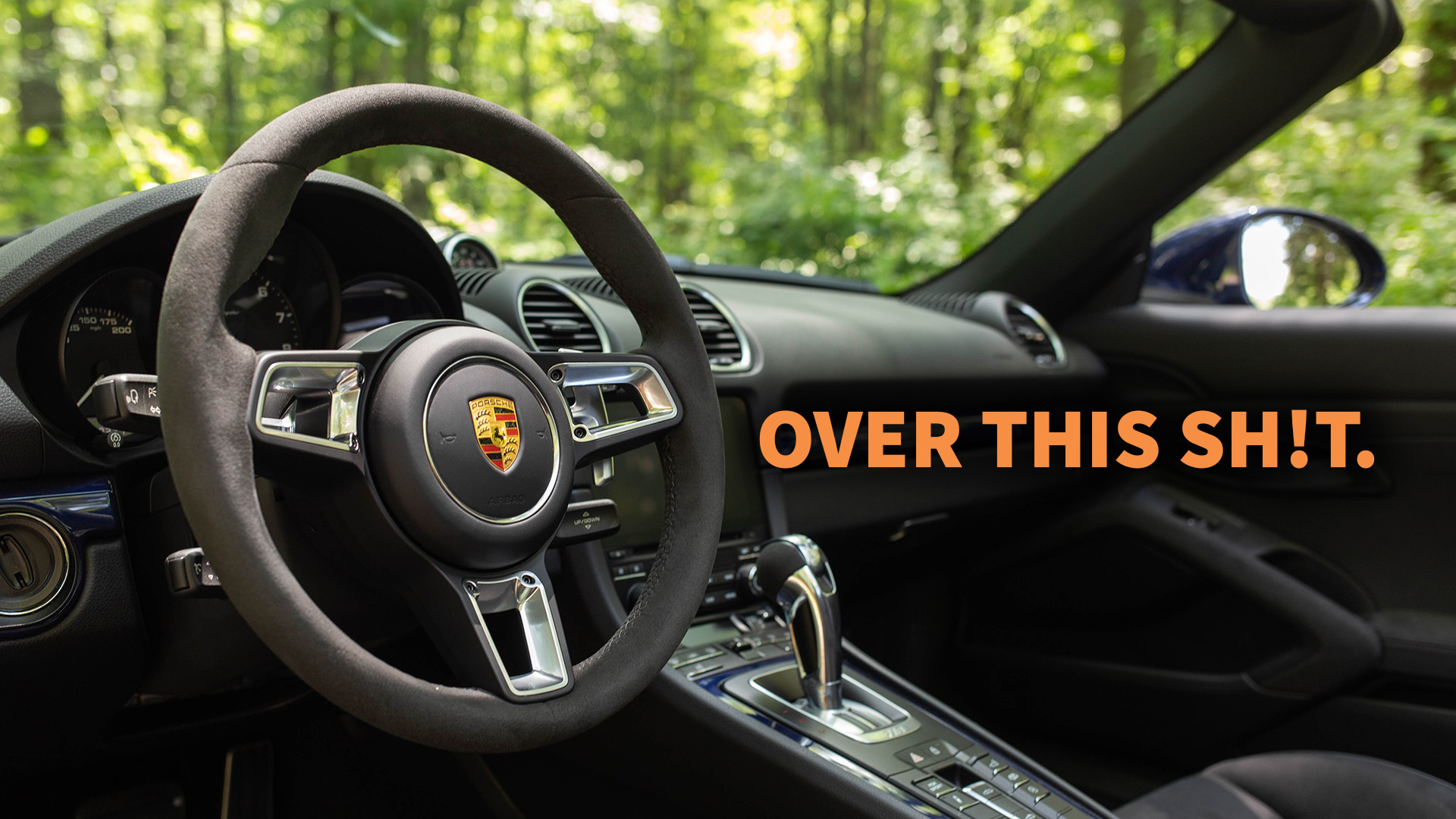

I can’t pinpoint exactly when it started happening, but it seems like almost every single performance car interior nowadays comes with something covered in Alcantara. Somebody somewhere must have decided this was the thing that would please the enthusiasts, and as a loud member of the enthusiast community, I must put my foot down. Enough is enough.
Alcantara, if you aren’t aware, is a brand of synthetic, suede-like material. It’s widely used across the tech, fashion, and design industries. Specifically for car interiors, it is a nice substitute for vinyl, cloth, and leather. Many OEMs praise Alcantara for its premium quality while also being lightweight—both desirable advantages when you’re building a feathery performance car that also shouldn’t make the driver feel like they’re sitting in a low-rent shed.
I don’t mean to call out the Porsche 718 Spyder here—it was otherwise an outrageously wonderful car—but after a while, I did start to take issue with precisely how much Alcantara coated its innards. The car’s seat inserts, gear selector, door handles, armrests, and—most egregiously—steering wheel were wrapped in the stuff. Alcantara is a felty, low-friction material that your skin slides over fairly easily, so to cover a high-priority touchpoint like the steering wheel with it never made much sense to me. I have always found leather- (or even pleather-) wrapped steering wheels to be much grippier and thus better for when you drive a sports car, uh, spiritedly.





Now, an argument can be made that gripping a black Alcantara steering wheel on a 100-degree sunny day is exponentially less painful than a black leather one. But we’ve all done the seven-and-five grip to navigate out of the parking lot before the wheel cools enough to resume 10-and-two.
Furthermore, Alcantara gets grimy, y’all, because humans are disgusting. We secrete oils and fluids and shed microscopic skin cells at all times. You’re doing it right now as you’re reading this, ya filthy animal. If you’re sitting in your car, all of that slop (word here courtesy of Peter Holderith) has to go somewhere. It goes all over that faux suede and really just gets in there. Sinks in. Festers.
Don’t believe me? Even the people running the Jay Leno’s Garage detailing blog say so. “Suede materials… [have a] tendency to absorb substances that they come in contact with,” they wrote. “Alcantara is very prone [to] absorbing the oils from your hands [and] skin. When this happens, the small fibers that make up the soft, velvety texture become matted and begin to lay flat. Stains appear and the surface quickly begins to lose its original luster. The material can get so saturated with dirt [and] grime that the suede surface begins to have a greasy or oily feel to it.”
Sounds gross!

But nobody wants to hear complaining without a solution, and I do have one. I’m not saying Alcantara isn’t a cool material, because it is. I like that it’s a lightweight leather alternative and is even fire-resistant. But on high-touch surfaces in the cabin of the car? No, thank you. It doesn’t feel right and gets grubby too easily. I’ve also never met anyone who wanted an Alcantara steering wheel. (I’m sure the comments section of this post will be filled with contrarians telling me otherwise.)
If automakers must put Alcantara on the insides of their cars, put it somewhere where no one will touch it. Line the ceiling and the car’s pillars with it. Roll it out over the dashboard under the windshield to cut down on glare. Put it in places where we can look but mustn’t touch.
Wanna reach out to tell me how correct I am? Email: kristen@thedrive.com.